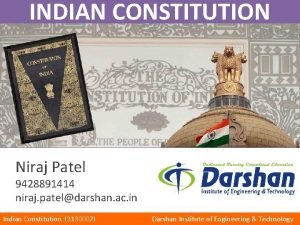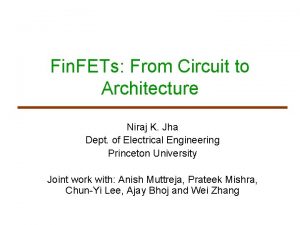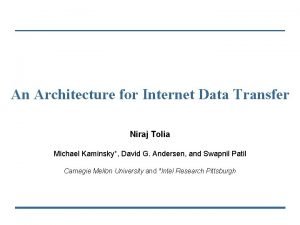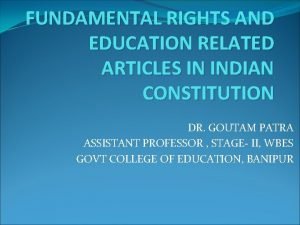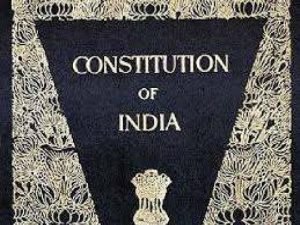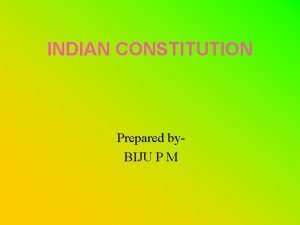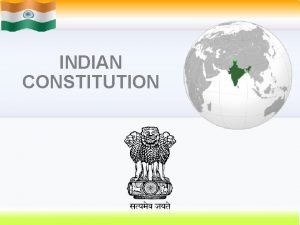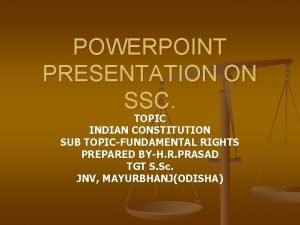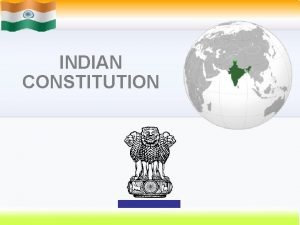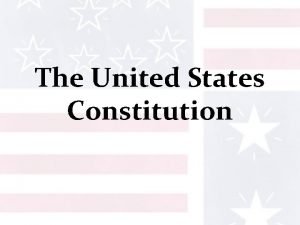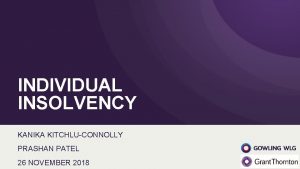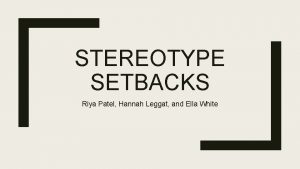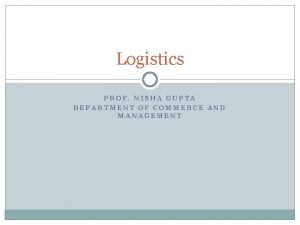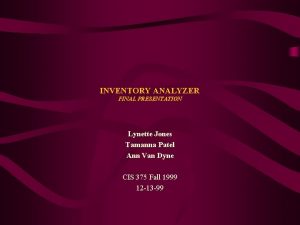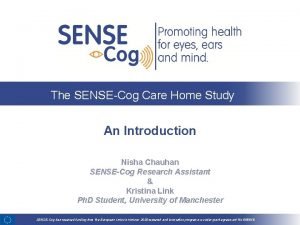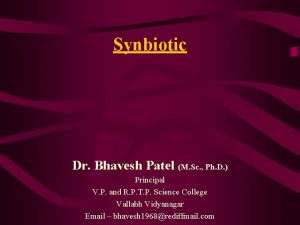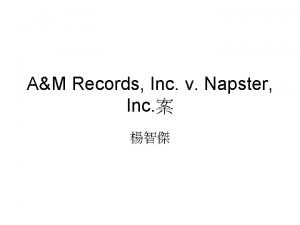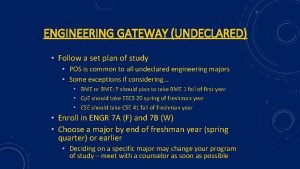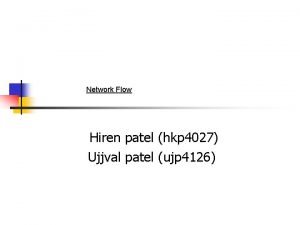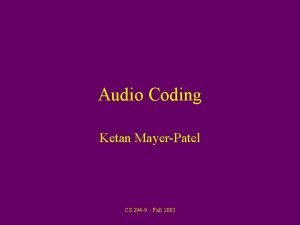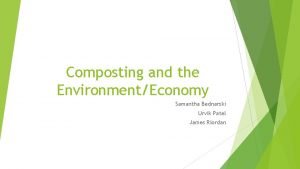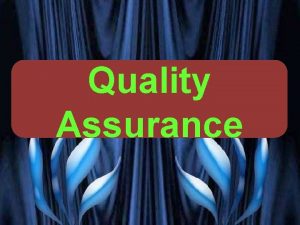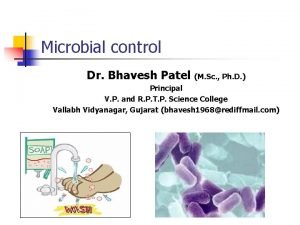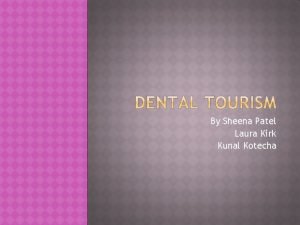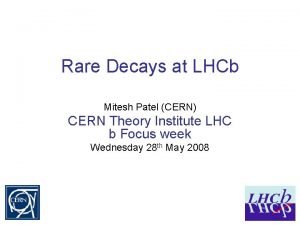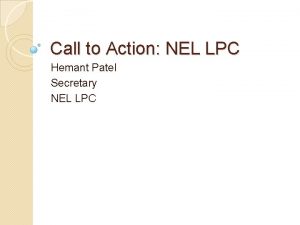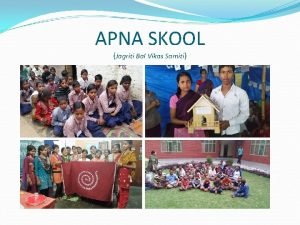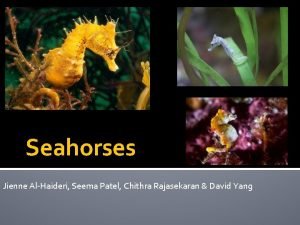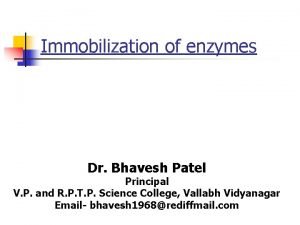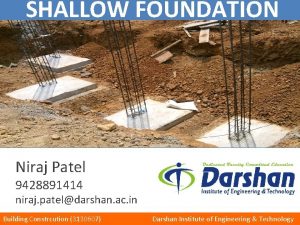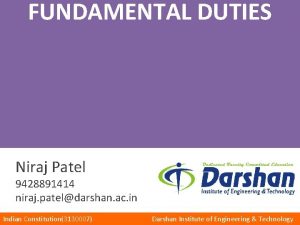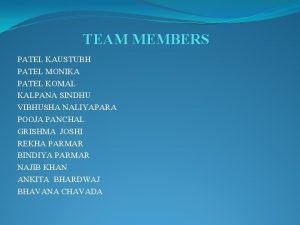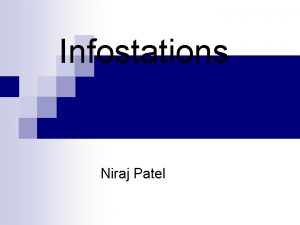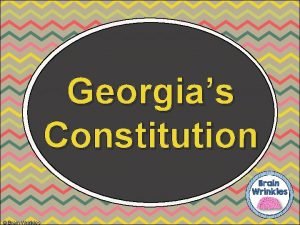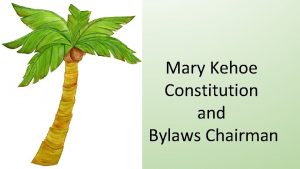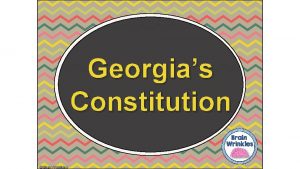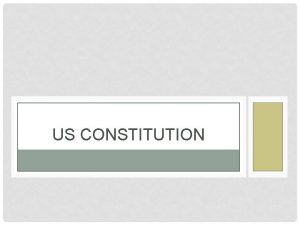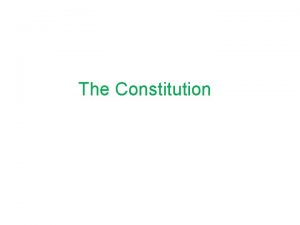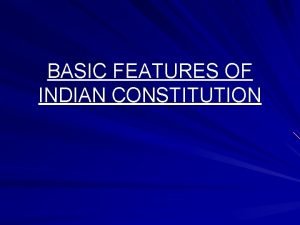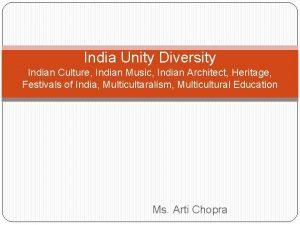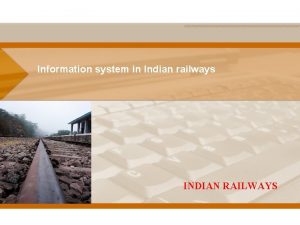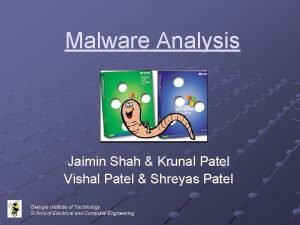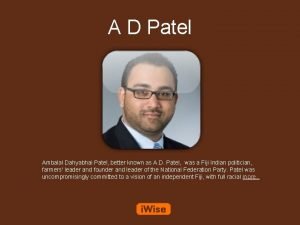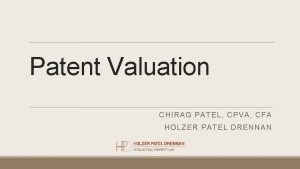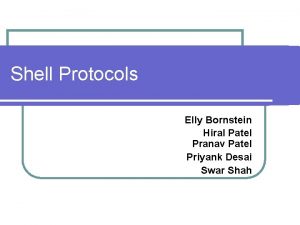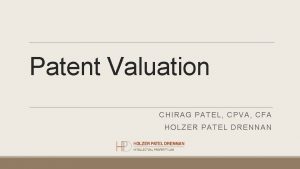INDIAN CONSTITUTION Niraj Patel 9428891414 niraj pateldarshan ac









































- Slides: 41

INDIAN CONSTITUTION Niraj Patel 9428891414 niraj. patel@darshan. ac. in Indian Constitution(3130007) Darshan Institute of Engineering & Technology

Topics to be covered § Meaning of Constitutional law & Constitutionalism. § History of making Indian Constitution. § Features & characteristics of our Constitution. § Fundamental Rights and Duties. § Directive Principles of State policy. § Federal Structure of Government. § Parliamentary form of Government. § Amendments. § Emergency Provisions. § Local Administration and Panchayati Raj. Indian Constitution (3130007) 2 Darshan Institute of Engineering & Technology

What we were before 1947 ? THEN, BEFORE 1947 NOW, AFTER 1947 Indian Constitution (3130007) 3 Darshan Institute of Engineering & Technology

Polity V/s. Constitution § Polity (������� , ������� ) and Constitution(������ ) are two different terms. § Constitution is simply a formal legal document defining the basic structure of the system/organisation/country. § It stipulates about the rights, duties, structure and set up according to which the norms are governed in the country/ organisation. § On the other hand, polity is actually an organizational structure of the government. § Constitution defines the system and polity is structure in which the system should function. Indian Constitution (3130007) 4 Darshan Institute of Engineering & Technology

Constitution ? ? § WHY NEEDED ? § HOW IT FORMED ? § WHEN IT ENFORCED ? § IMPORTANCE ? Indian Constitution (3130007) 5 Darshan Institute of Engineering & Technology

HISTORY OF MAKING INDIAN CONSTITUTION

Introduction § The History of making our constitution can be traced back to year 1858 (A. D. ) § In the wake of Sepoy mutiny (first war of independence as described by Indians) in 1857, compelled British empire to abolish the East India company’s rule and British crown assumed the power in 1858. § Government of India Act was enacted in this year. § However, the first step taken by Britishers were its root in 1773 A. D. Indian Constitution (3130007) 7 Darshan Institute of Engineering & Technology

Identify ? Robert Clive Indian Constitution (3130007) 8 Mir Jaffar Darshan Institute of Engineering & Technology

Regulating Act (1773) § First step to control and regulate the internal affairs of India. § Designated Governor of Bengal as “Governor General of Bengal”. § First one to hold this title was Lord Warren Hastings. § It Made Madras and Bombay subordinate of Bengal. § Establishment of Supreme Court in Calcutta (1774). (1+3) § Prohibited servants of company from engaging in private trade and accepting Presents. § Enforce Court of Director to report its civil, revenue and military affairs in Indian Constitution (3130007) 9 Darshan Institute of Engineering & Technology

Pitt’s Act (1784) § It separated political and commercial functions of company. EAST INDIA COMPANY Court of Directors Board of Control Commercial Affairs Indian Constitution (3130007) Political Affairs 10 Darshan Institute of Engineering & Technology

Charter Act (1833) § Final step to centralization of authority. § It made Governor General of Bengal as “Governor General of India”. § Lord William Bentick Was first one to hold this Title. § It had also vested exclusive legislative power for entire British India to him. § Previously laws made were known to be Regulations, Now it was Called as “Acts”. § It ended activities of East India Company as commercial Body. It become administrative body for all territories of India on behalf of British Crown, his heirs and successors. Indian Constitution (3130007) 11 Darshan Institute of Engineering & Technology

Government of India Act (1858) § Also known as “Act for the Good Government of India”. § Abolished the Company Rule, British Crown assumes power. § Designation of Governor General of India was changed to Viceroy of India. § Lord Canning was first one to hold this title. § Ended the system of double government. Created new office of “Secretary of State” for India. § 15 member advisory body called Council of India was created to assist Secretary of State. § This act was largely confined to improvement of administrative machinery. That was of no benefit to Indians! Indian Constitution (3130007) 12 Darshan Institute of Engineering & Technology

Indian Councils Act (1861) § Entry of Indians into Law making process. § In 1862, Raja of Beneras, Maharaja of Patiala & Sir Dinkar Rao were appointed in legislative Council of Lord Canning. § It initiated process of decentralization by restoring legislative power to Bombay and Madras presidencies. (Reverse of Regulating Act, 1773). § New development councils for Bengal, North-west Frontier Province & Punjab in 1862, 1866 & 1897 Respectively. § It empowered Viceroy to make rules and order for ease of doing business. It also vested Emergency power. § It also gave recognition to “Portfolio System”. Indian Constitution (3130007) 13 Darshan Institute of Engineering & Technology

Indian Councils Act (1892) § It increased the no. of additional members (non-official) in the central and provincial councils. § It gave power to discuss Budget and addressing questions to the executive. Indian Constitution (3130007) 14 Darshan Institute of Engineering & Technology

Indian Councils Act (1909) § Popularly known as “Morley – Minto” reforms. § It had increased the size of councils both, central & provincial. Central Legislative council was raised from 16 to 60. § Diversified the functions of councils. § Association of Indians in Executive Councils. Satyendra Prasad Sinha become its first member. § Concept of Separate Electorate: Muslim members were elected by only Muslim voters. So it legalized the Communalism. § Separate representations of corporations, universities, Chamber of Commerce & Zamindars. Indian Constitution (3130007) 15 Darshan Institute of Engineering & Technology

Government of India Act (1919) § On August 20, 1917, British government declared to introduce a responsible government of India. § GOI Act was enacted in 1919, enforced in 1921. § Also known as “Montague – Chelmsford” Reforms. § It Provided Base for construction of Present Constitution of Indian Constitution (3130007) 16 Darshan Institute of Engineering & Technology

Features of GOI Act, 1919 § It provided that three out of six members of executive council (viceroy’s) must be Indians. § Communal representation by separate electorate for Sikhs, Christians, Anglo – Indians & Europeans (likewise Muslim). § Establishment of Public Service Commission. CPSC was established in 1926. § Relaxed the central control over provinces. Subjects § Introduction of term “Subjects” which is still in used in present times. Indian Constitution (3130007) Transferred Reserved 17 Darshan Institute of Engineering & Technology

Contd. § It provided for first time, Bicameralism and direct elections in country. § Thus, Indian Legislative council was replaced by bicameral legislature consisting of a Upper house (Council of State) and a Lower house (Legislative Assembly). Indian Constitution (3130007) 18 Darshan Institute of Engineering & Technology

Government of India Act (1935) § Second milestone to form responsible government in India. § It was detailed document having 321 Sections and 10 Schedules. § Establishment of Indian Federation. § Act divided powers between centre and provinces in the manner of Subjects. 1. Federal List (59 subjects) (97) 2. Provincial List (54 Subjects)(66) 3. Concurrent List (36 Subjects)(47). § Residuary powers were given to Viceroy. § However, Federation came never into effect as princely state did not join it. Indian Constitution (3130007) 19 Darshan Institute of Engineering & Technology

Contd. § The provinces were allowed to act as Autonomous units of administration in their defined spheres. § It provided for dyarchy(������ ), in centre. § It introduced bicameralism in 6 out of 11 provinces. This list included Bengal, Bombay, madras, Bihar, Assam and the United Provinces. § Establishment of Reserve Bank of India to control currency and credit. § Communal representation for depressed classes (SC), women and labours. § Establishment of Federal Court in 1937. Indian Constitution (3130007) 20 Darshan Institute of Engineering & Technology

Indian Independence Act (1947) § On 20 th February 1947, British PM declared that Clement Atlee declared that British Rule in India would end by 30 th June 1948. § This was followed by agitation by Muslim League demanding a separate country and partition of India. § On 3 rd June 1947, British government made it clear that any constitution framed by assembly (formed in 1946) cannot apply to those part of country which were unwilling to accept it. § On same day, Lord Mountbatten put partition plan, known as Mountbatten Plan. § Same was accepted by congress and Muslim League. Indian Constitution (3130007) 21 Darshan Institute of Engineering & Technology

Contd. § India will be independent and sovereign state from 15 th August, 1947. § It provided for partition, creating two independent dominions , India and Pakistan. § It abolished the office of Viceroy of India. § It empowered the assemblies of both state to frame and adopt any constitution for their respective area and to legislate for their respective territories until new constitution was drafted and enforced. § It granted freedom to all princely state to join either of dominion or to remain independent. Indian Constitution (3130007) 22 Darshan Institute of Engineering & Technology

Demand for Constitution § Issue first raised by M. N. Roy (a communist) in 1934. § In 1935, INC demanded to frame Constitution of India. § In 1938, Jawaharlal Nehru, on behalf of INC, declared that “ constitution of India must be framed without outside interference. ” § Finally accepted by British, in “August offer” in 1940, in which Sir Stafford Cripps came with a draft to frame constitution after World War II. § It was rejected by Muslim League, which wanted the partition into two states. § Finally a scheme of Constituent Assembly was accepted by Cabinet Mission sent by British. Indian Constitution (3130007) 23 Darshan Institute of Engineering & Technology

Composition of Constituent Assembly § Total 389 members. 1. 296 seats to British India 2. 93 seats to Princely States. § Out of 296, 292 from 11 governor’s provinces and 4 from chief commissioners provinces. § Representation of one seat per 1 million of population. § Seats were divided among three communities – Sikhs, Muslims and other in proportion to their population. § Representative of princely states were to be nominated by heads of the state. Indian Constitution (3130007) 24 Darshan Institute of Engineering & Technology

Contd. § Election were held in July-August 1946. § INC won 208 seats, Muslim League won 73 seats and 15 seats were won by small groups and independents. § However, 93 seats remain vacant as princely states decided to stay away from this assembly. § It consists of representatives from all section of society, all important personalities of that time except Mahatma Gandhi and MA Jinnah. Indian Constitution (3130007) 25 Darshan Institute of Engineering & Technology

Working § First meeting on 9 th December, 1946. § Muslim League boycotted the meeting. § Meeting was attended by 211 members only. § Dr. Sachchidanand Sinha, oldest member were elected as temporary president. § Later on 11 th December, 1946, Dr. Rajendra Prasad and H. C. Mukherjee was elected as president and vice president of assembly. Indian Constitution (3130007) 26 Darshan Institute of Engineering & Technology

Indian Constitution (3130007) 27 Darshan Institute of Engineering & Technology

Addressing the assembly Indian Constitution (3130007) 28 Darshan Institute of Engineering & Technology


Finally, the making of India § Various committees are formed under the assembly as discussed earlier. § Major committee are listed as under 1. Union powers committee – J. N. Nehru 2. Union constitution committee – J. N. Nehru 3. Provincial constitution committee – Sardar Patel 4. Drafting committee –Dr. B. R. Ambedkar 5. Advisory committee on fundamental rights, minorities and tribal & excluded area –Sardar Patel 6. Rules of procedure committee – Dr. Rajendra Prasad 7. States committee - J. N. Nehru 8. Steering committee – Dr. Rajendra Prasad Indian Constitution (3130007) 30 Darshan Institute of Engineering & Technology

Other minor committees § Committee on function of constituent assembly. § Order of business committee § House committee § Ad hoc committee on National Flag § Special committee to examine the draft constitution § Credential committee § Finance and staff committee § Hindi translation committee § Urdu translation committee § Press gallery committee § Committee to examine the effect of Indian independence act, 1947 Indian Constitution (3130007) 31 Darshan Institute of Engineering & Technology

Contd. § Committee on chief commissioner’s provinces § Commission on Linguistic Provinces § Expert committee on financial provisions § Ad hoc committee on supreme court Indian Constitution (3130007) 32 Darshan Institute of Engineering & Technology

Which one was important ? § Amongst all of above stated committee, Drafting committee was most important which was created on August 29 th , 1947. § This committee under the leadership of Dr. B. R. Ambedkar, was enstrusted with task of framing the new constitution. § It consist of seven members 1. Dr. B. R. Ambedkar (Chairman) 2. N Gopalaswamy Ayyangar 3. Alladi Krishnaswamy Ayyar 4. Dr. K. M. Munshi 5. Syed Mohammad Saadullah 6. N Maddhava Rau (Replaced B L Mittar who resigned due to illness) 7. T. T. krishnamachari (replaced D P Khaitan who died in 1948) Indian Constitution (3130007) 33 Darshan Institute of Engineering & Technology

Drafting Committee Indian Constitution (3130007) 34 Darshan Institute of Engineering & Technology

Contd. § Prepare its first draft published in February 1948. § After comments, criticsms and suggestions, published second draft in October 1948. § In total, it took around six months(141 days) to prepare the draft. Indian Constitution (3130007) 35 Darshan Institute of Engineering & Technology

Baba Saheb Ambedkar in Assembly Indian Constitution (3130007) 36 Darshan Institute of Engineering & Technology

Session of assembly Session Period First session 9 th -23 rd December, 1946 second session 20 th -25 th January, 1947 Third session 28 th April- 2 nd May, 1947 Fourth session 14 th – 31 st July, 1947 Fifth session 14 th -30 th August, 1947 Sixth session 27 th January, 1948 Seventh session 4 th November, 1948 – 8 th January, 1949 Eighth session 16 th May – 16 th June, 1949 Ninth session 30 th July – 18 th September, 1949 Tenth session 6 th – 17 th October, 1949 Eleventh session 14 th – 26 th November, 1949 Indian Constitution (3130007) 37 Darshan Institute of Engineering & Technology

Final Draft Submitted on 25 th November, 1949 Indian Constitution (3130007) 38 Darshan Institute of Engineering & Technology

Signing the Constitution, 26 th November, 1949 Indian Constitution (3130007) 39 Darshan Institute of Engineering & Technology

So, sum of all work § In all, constituent assembly had 11 sessions over 2 years, 11 months and 18 days. § Constitution makers had gone through the constitutions of 60 countries in all. § Other Functions performed 1. It adopted national flag on July 22 nd , 1947. 2. It adopted national anthem on January 24 th , 1950. 3. It adopted national song on January 24 th , 1950. Finally, on 26 th January 1950, “Republic of India” was on the world map!!!!!!! Indian Constitution (3130007) 40 Darshan Institute of Engineering & Technology

 Dr niraj patel
Dr niraj patel Dr niraj patel
Dr niraj patel Guide planes rpd
Guide planes rpd Nc constitution vs us constitution
Nc constitution vs us constitution Constitution what is constitution
Constitution what is constitution Lesson 1 principles of the constitution
Lesson 1 principles of the constitution Texas constitution vs u.s. constitution venn diagram
Texas constitution vs u.s. constitution venn diagram Niraj transfer
Niraj transfer Fundamental duties
Fundamental duties Characteristics of indian constitution
Characteristics of indian constitution Key features of indian constitution
Key features of indian constitution Definition of indian constitution
Definition of indian constitution Fundamental rights in indian constitution ppt
Fundamental rights in indian constitution ppt What is constitution
What is constitution Indian constitution preamble
Indian constitution preamble Prashan patel grant thornton
Prashan patel grant thornton Riya patel quora
Riya patel quora Nisha patel md
Nisha patel md Software inventory analyzer
Software inventory analyzer Women's sex
Women's sex Nisha patel md
Nisha patel md Dr bhavesh patel
Dr bhavesh patel Life of pi real story
Life of pi real story Marilyn hall patel
Marilyn hall patel Engineering gateway uci
Engineering gateway uci Ujjaval patel
Ujjaval patel Parasitic food chain example
Parasitic food chain example Ketan mayer patel
Ketan mayer patel Urvik patel
Urvik patel Qa eic patel the
Qa eic patel the Bhavesh patel md
Bhavesh patel md Smoldering myeloma
Smoldering myeloma Dr sheena patel
Dr sheena patel Mitesh patel cern
Mitesh patel cern Multiple myeloma cure
Multiple myeloma cure Nel patel
Nel patel Dr vikas patel
Dr vikas patel Seema patel md
Seema patel md Dr bhavesh patel
Dr bhavesh patel Life of pi orange juice
Life of pi orange juice Dpdk api
Dpdk api Disadvantages of wireless local loop
Disadvantages of wireless local loop
